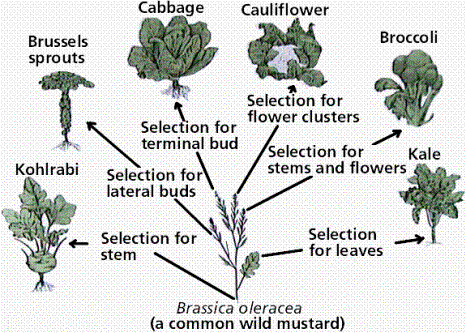BOLD is an acronym that stands for Beef in an Optimal Lean Diet. A study done by Penn State University and published in the American Journal for Clinical Nutrition coined the term and have proven that eating beef is heart healthy. This study found that lean beef actually helped to
LOWER cholesterol levels! In fact, it lowered LDL (bad cholesterol) by 10%! That's exciting if you ask me! Here is the link to that study:
http://ajcn.nutrition.org/content/early/2011/12/13/ajcn.111.016261.full.pdf+html
 |
| Delicious LEAN Beef! |
This means that beef can be part of a healthy diet and can help to combat America's largest epidemic, obesity. Below is a chart that explains several different diets, and how the BOLD diet stacked up.
|
|
HAD
|
DASH
|
BOLD
|
BOLD-PLUS
|
|
Calories
|
2,097
kCal
|
2,106
kCal
|
2,100
kCal
|
2,104
kCal
|
|
Protein (% of total calories)
|
17%
|
18%
|
19%
|
27%
|
|
Carbohydrate (% of total calories)
|
50%
|
55%
|
54%
|
45%
|
|
Fat (% of total calories)
|
33%
|
27%
|
28%
|
28%
|
|
Saturated Fat (% of total calories)
|
12%
|
6%
|
6%
|
6%
|
|
Monounsaturated Fat (%of total calories)
|
11%
|
9%
|
11%
|
12%
|
|
Polyunsaturated Fat (% of total calories)
|
7%
|
8%
|
7%
|
7%
|
|
Lean Beef (oz./day before cooking)
|
0.7
|
1.0
|
4.0
|
5.4
|
HAD - Healthy American Diet
Control diet. More refined grains, full-fat dairy products, oil and butter. Aimed to reflect current American dietary habits.
DASH - Dietary Approaches to Stop Hypertension
Considered the "Gold Standard" heart-healthy diet, this eating plan features vegetables, fruits, and low fat dairy and limited red meat and sweets. Primary protein is white meat and plant protein.
BOLD - Beef in an Optimal Lean Diet
Similar to DASH diet (rich in vegetables, fruits, whole grains, nuts and beans), and protein amount, but used lean beef (4 oz./day) as primary protein source.
BOLD-PLUS - Beef in an Optimal Lean Diet Plus
Similar to BOLD diet, but with higher protein and lean beef intake (5.4 oz./day)
Taken from:http://www.beefitswhatsfordinner.com/CMDocs/BIWFD/Bold/BOLDFactSheet.pdf
What All this Different Fats Mean
If you're like me, all those different fat names sound like a bunch of scientific gibberish and I'm not really sure what they include! Here is a brief overview of what they mean.
Saturated fat is what is known as the "bad" fat. This doesn't mean you don't need it, but only in the right amounts! A typical serving of lean beef only contains up to 4.5 g, which is about 40% of your Daily Value (DV). Many cuts are less!
Monounsaturated Fat is the same kind of heart healthy fat that you find in olive oil, and lean beef contains about 50% of your DV of this in a 3 oz. serving.
Polyunsaturated fat is essential for cell structure and the production of hormones. This fat is also found in sunflower and corn oils. Lean beef makes up about 10% of this type of fat.
Total Fat is the combination of all of these, and all 29 lean cuts have
less than 10 g of total fat!
29 Ways to Love Beef
There are 29 lean cuts, as certified by the USDA. This means, these cuts will have less than 10 g of fat, 4.5 g of saturated fat or less, and less than 95 mg of cholesterol per 3.5 ounce cooked serving! 15 of these 29 are consumer preferred cuts, like Sirloin, T-Bone or Tri-Tip! A good tip when you are looking for lean beef is to search for the key words "Loin" or "Round" in the name.
 |
| LEAN BEEF! Check out where the Chicken Breast and Thigh Rank! |
Nature's Multivitamin
Beef is often referred to as Nature's Multivitamin because it is so high in the nutrients needed to support your body. Zinc, Iron and Protein are among beef's best attributes. Beef is actually the
#1 Food Source of Zinc, containing
39% of the zinc most people need in just 3 ounces. Iron is essential to the body, as anemia is the most common nutritional deficiency in the United States. Beef is a great source of this and ranks number 3 in the highest food sources.
Beef can also help your body to absorb iron from other food sources, such as plants, two- to four-fold! Finally, protein is something we are all familiar with, and a 3 ounce serving of beef contains
50% of your daily value of Protein.
After learning all this about beef, I hope you are ready to go eat some! Here is a great recipe that can be used as part of the BOLD diet! If you would like to learn more or find recipes, visit
BeefItsWhatsforDinner.com or
BeefNutrition.org.
Grilled Beef Steaks with Ancho Chile Rub
Total Recipe Time: 30 minutes
 |
Looks Delicious! I know what I'm having
for dinner, how about you? |
2 beef round (sirloin) tip center steaks, cut 1 in. thick (about 8 oz.)
Salt and pepper as desired
Ancho Chile Rub
1 tablespoon ground Ancho Chile powder
3 cloves garlic, minced
1 1/2 teaspoons dried oregano
1 teaspoon unsweetened cocoa powder
1 teaspoon freshly grated orange peel
1/2 teaspoon ground cinnamon
Steps
1. Combine rub ingredients and press evenly into beef steaks.
2. Place steaks on grill over medium, ash-covered coals. Grill covered, about 11-13 minutes for medium rare doneness (160 degrees), turning only once.



















.jpeg)
















